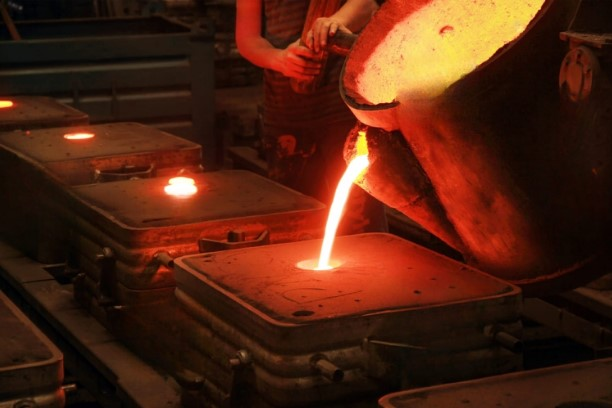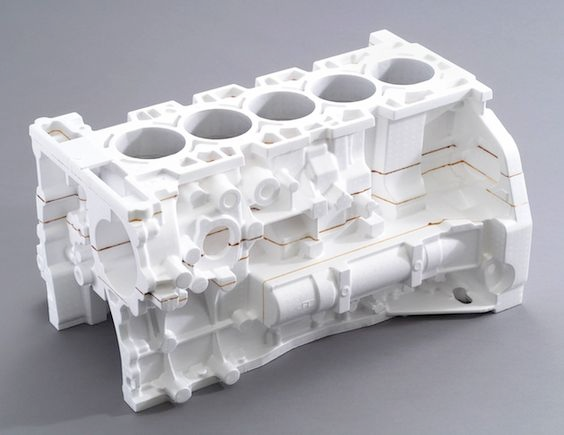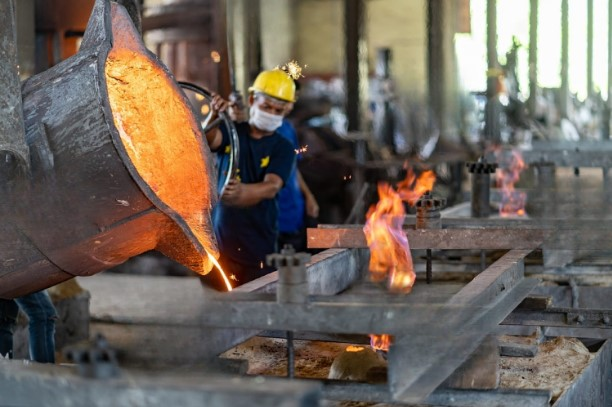Manufacturing processes are crucial to the production of various goods and products that we use in our daily lives. The proper manufacturing process is essential to achieve the desired product quality, production volume, and cost.
This article will provide an overview of these two casting processes, compare their advantages and disadvantages, and discuss the factors to consider when choosing the right manufacturing process.
The Sand Casting Process
The editor is in read-only mode
 Add image alt text.
Add image alt text.
Advantages
This process can be used to create multiple parts simultaneously. It is a relatively inexpensive casting process compared to other casting methods, such as the investment casting process or die casting process. The sand, equipment, and labor costs required are relatively low.
The process can be done with various materials, including grey iron, steel, bronze, and aluminum. This makes it a popular choice in various industries.
Disadvantages
Like any other manufacturing process, it also has its advantages and disadvantages. It is not known for its dimensional accuracy, which can be a disadvantage for parts that require tight tolerances. It can sometimes result in porosity, which can weaken the final product. Parting lines may also be present, which may affect the surface quality of the casting.
Sands in Use
A sand mold is made by mixing sand, clay, and water. It can be a green sand casting mold or a regular resin sand mold. Because the materials are easy to source, green sand molds are relatively cost-effeective for consumers.
Some also use resin sand. Resin is a sand mixture with an added resin binder. The resin is cured with a catalyst, creating a strong bond between the sand grains.
Shell sand is made by heating it to a high temperature, which causes the grains to bond. The result is then coated with a resin binder and cured to create a shell-like mold.
Process Steps
Making a pattern is the initial procedure. The mold is made using a design that is an exact copy of the finished product. Core molds are used to create internal passages in the final product.
As it continues to cool, it will start to become more solid. Because the pace at which the metal cools might have an effect on the ultimate qualities of the metal, it is essential that the cooling process be controlled.
The shakeout process typically involves vibrating the mold to break it apart and remove the sand. The final product may require additional finishing, such as grinding, sanding, or polishing. This is done to remove any rough edges or imperfections and improve the product’s surface finish.
The Lost Foam Casting Process
The editor is in read-only mode

This involves creating foam patterns of the final product, coating it with refractory material, and then pouring molten metal into the mold, causing the foam molds to vaporize and leaving behind the final product.
The lost foam process is versatile and can be used to produce parts of various sizes and shapes with intricate details.
Advantages of Lost Foam Casting
Sand casting makes it possible to make components that have a clean surface finish and great dimensional precision, hence eliminating the requirement for post-casting machining.
Lost foam casting is a highly material-efficient method as it produces minimal waste. The foam pattern is consumed during the casting, leaving only the final product behind.
Disadvantages of Lost Foam Casting
Materials with higher melting points, such as titanium and stainless steel, cannot be used in this method.
The final product’s surface finish depends on the foam pattern’s quality. If the foam pattern is not high quality, it may not meet the required standards. It may also produce dimensional variations in the final product due to the nature of the foam pattern. The foam pattern can shrink or expand during casting, leading to variations in the final product’s dimensions.
Lost foam casting is a relatively complex process that requires specialized equipment and skilled technicians. The process requires close monitoring and precise process control of the casting parameters to produce high-quality parts compared to other casting processes.
Process Steps of Lost Foam Casting
The polystyrene foam pattern must be created to the exact dimensions and shape of the final product, including any intricate details or features.
The shell provides additional support to the foam pattern during the casting process and helps maintain the final product’s shape. The refractory material can be applied using various techniques, including dipping, brushing, or spraying.
Once the foam pattern is coated with the refractory material, it is assembled with any additional parts or features required for the final product.
After the metal component has been released from the mold, any leftover sand or debris is cleaned off of it. To get the ideal surface quality and dimensions, further finishing operations, including machining, polishing, and coating, may be applied to the component.
Lost Foam Castings in Industries
The process’s precision and flexibility make it ideal for creating pieces with intricate geometries and tight tolerances. It is usually used for parts essential in aerospace, automotive, medical, energy, agriculture, and construction.
Comparison of Sand CastingvsLost Foam Casting
The editor is in read-only mode
 Add image alt text.
Add image alt text.
Product Quality
Regarding product quality, there are distinct differences between sand casting and lost foam casting.
Sand casting can be more porous due to the nature of the sand used in the process. But is suited for high-volume production since molds can be easily replicated and reused.
Costs
Sand casting is generally less expensive. This is because sand is an abundant and relatively inexpensive material, and the molds can be reused multiple times.
Tools and Pattern Requirements
Sand-casting patterns might be formed of wood, plastic, or metal. The design must be recreated each time a new mold is made, which can be time-consuming and costly.
However, lost foam casting requires more specialized equipment, such as a foam molding machine and a vaporization system, which can add to the cost of the process.


